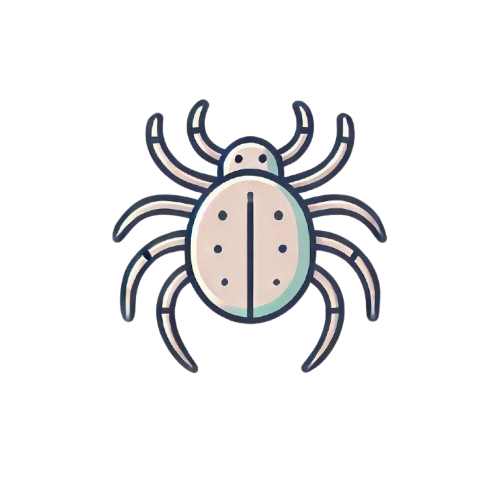Introduction
The American dog tick, also known as Dermacentor variabilis, is a species of hard tick that is notorious for being a vector of several diseases, including Rocky Mountain spotted fever and tularemia.
Found primarily in North America, this tick has a significant impact on both animal and human health.
Habitat and Distribution
The American dog tick is commonly found in areas with high grass, brush, and wooded regions.
They thrive in environments where they can easily find hosts to feed on, such as domestic dogs, humans, and wildlife.
Their distribution is widespread across North America, especially in the eastern United States and along the Pacific coast.
Life Cycle
The life cycle of the American dog tick consists of four stages: egg, larva, nymph, and adult.
Each stage requires a blood meal to progress to the next.
Here’s a detailed breakdown:
- Egg: The life cycle begins when a female tick lays thousands of eggs in the environment.
- Larva: The eggs hatch into six-legged larvae, often referred to as seed ticks. These larvae seek out small mammals or birds for their first blood meal.
- Nymph: After feeding, larvae molt into eight-legged nymphs. Nymphs continue to seek out hosts, including larger mammals, for another blood meal.
- Adult: Nymphs molt into adult ticks, which are capable of reproducing. Adult ticks seek out larger hosts, including dogs and humans, to feed and mate.
Feeding Behavior
American dog ticks are obligate hematophages, meaning they rely solely on blood meals for nutrition.
They exhibit a behavior known as questing, where they climb onto vegetation and extend their front legs to latch onto passing hosts.
Once attached, ticks use specialized mouthparts to pierce the host’s skin and feed on blood.
Disease Transmission
One of the primary concerns with the American dog tick is its role as a vector for diseases.
Two notable diseases transmitted by this tick are Rocky Mountain spotted fever and tularemia:
- Rocky Mountain Spotted Fever (RMSF): Caused by the bacterium Rickettsia rickettsii, RMSF can be severe and potentially fatal if not treated promptly. Symptoms include fever, headache, rash, and muscle pain.
- Tularemia: Also known as rabbit fever, tularemia is caused by the bacterium Francisella tularensis. It can cause a range of symptoms, including fever, skin ulcers, and swollen lymph glands.
Prevention and Control
Preventing tick bites is crucial in reducing the risk of disease transmission.
Here are some effective strategies:
- Avoid Tick-Infested Areas: Stay away from areas known to harbor ticks, especially during peak tick activity seasons.
- Protective Clothing: Wear long sleeves, pants, and socks to minimize skin exposure. Tuck pants into socks to create a barrier.
- Tick Repellents: Use insect repellents containing DEET or permethrin on clothing and exposed skin.
- Regular Tick Checks: After spending time outdoors, thoroughly check for ticks on your body and pets.
- Landscape Management: Keep lawns trimmed and remove leaf litter to reduce tick habitat around homes.
Role in the Ecosystem
While American dog ticks are often viewed negatively due to their role in disease transmission, they do play a role in the ecosystem.
They serve as a food source for various predators, including birds, rodents, and other arthropods.
Additionally, ticks help control populations of certain mammals and birds by acting as a natural parasite.
Conclusion
The American dog tick is a fascinating yet potentially dangerous arthropod.
Understanding its life cycle, behavior, and the diseases it can transmit is essential for effective prevention and control measures.
By taking proactive steps to avoid tick bites and manage tick habitats, we can reduce the impact of these ticks on both human and animal health.
Additional Research
For those who are interested in delving deeper into the subject, numerous scientific papers and articles provide detailed information on the American dog tick.
Additionally, resources from organizations like the Centers for Disease Control and Prevention (CDC) and the World Health Organization (WHO) offer valuable insights into tick-borne diseases and prevention strategies.


Leave a Reply